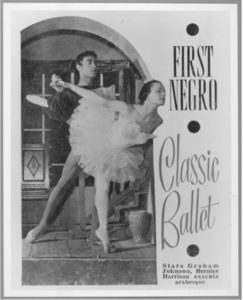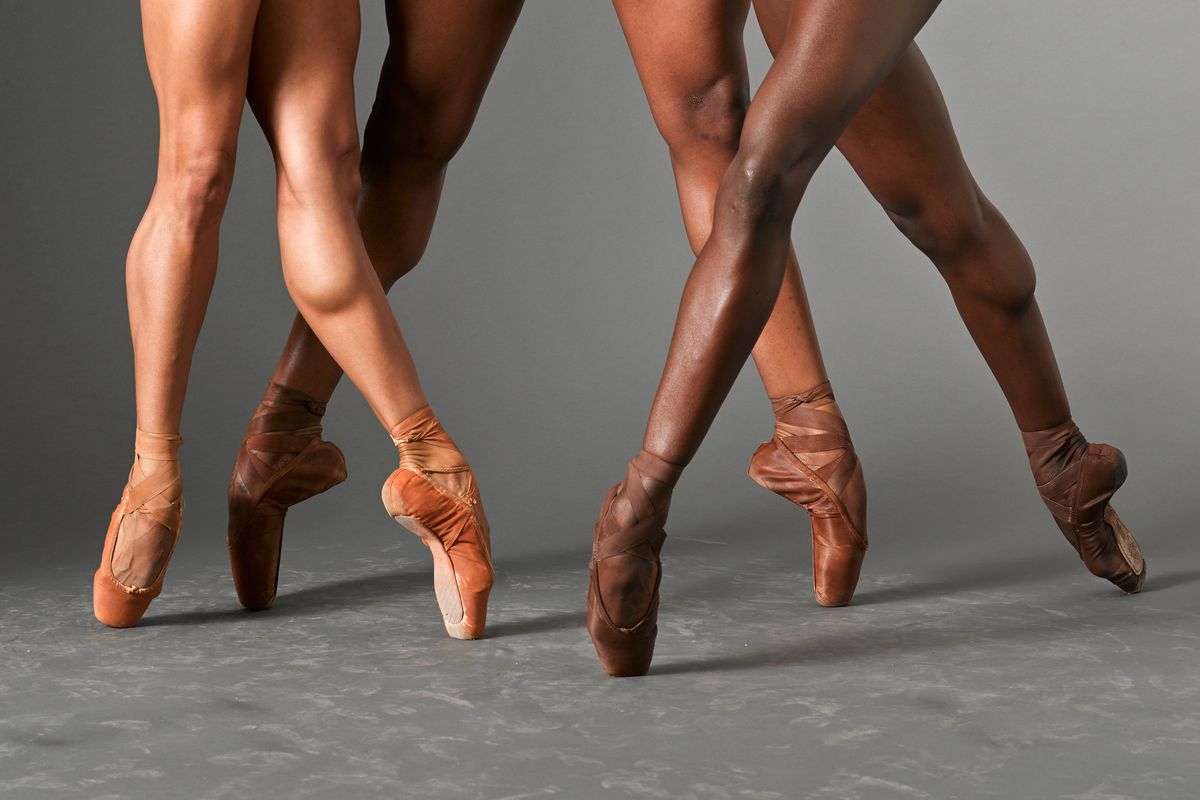The Feminist Lens
What is a feminist lens? A feminist lens or feminist literary criticism, is examination and analysis informed by feminist theory or politics. This means recognizing that literature both reflects and…
Read moreWhat is a feminist lens? A feminist lens or feminist literary criticism, is examination and analysis informed by feminist theory or politics. This means recognizing that literature both reflects and…
Read moreSince the beginning of its existence, ballet aimed towards a very specific group of people – those who are skinny and White. The first professional ballerina, Mademoiselle De Lafontaine, also known as La Fontaine, was from France, petit, and fair skinned. Since that point on, ballerinas were expected to look extremely similar. However, in more recent years (1940’s – present), dancers have been able to take more steps into making a more welcoming environment for talent.
Joseph Rickard launched First Negro Classic Ballet (hereafter the FNCB) in 1946. He was one of the first persons to create a space for dancers of color. Though he had little money, resources, or even dancers he created FNCD. Ballet dance historian, Carrie Gaiser, explored the challenges of the African American ballet company in her analysis piece produced by the Dance Theatre of Harlem. She noted that, “White Americans were reluctant to accept the idea of African Americans performing in what long remained a white-dominated art form.” Rickard was particularly interested in creating a space that not only practiced ballet but also “the unique kinds of dances that the group performed; rather than borrowing from the standard ballet repertoire.” The FNCB created its own ballets, often with music written specifically for those ballets, that made the troupe a model of black agency.

First Negro Classic Ballet (FNCB) in 1948
Another instance is Seán Curran, a choreographer. Curran explained that a major part of creating his company was to foster diversity – Black people, Italian, Irish, etc. Here we see not only Black diversity, but also diversity for European countries that are typically overlooked, in terms of discrimination. Curran created a talks about being influenced by Bill T. Jones, a choreographer and co-founder of the Bill T. Jones/Arnie Zane Dance Company. Curran was looking to emulate this feeling with his company. Curran used simple but effective techniques to foster and exemplify diversity. Actions as simple as wearing no shoes to prevent dancers needing to pancake (putting foundation on shoes in order to match the fair colored shoes to darker skin tones) their shoes.

Pointe shoes only come in light pink and light tan so dancers must pancake shoes to match darker skin tones.
Lastly, in a slightly different case is Thomas Prestø. Prestø, a Black man living in a neo-nazi hub in Norway. Prestø, through his struggles and abuse grew up to form the Tabanka Dance Company to promote “a sustainable Black identity” that converges both Caribbean and African movement aesthetics to tell the stories of Blacks in Norway. He has discussed how his experiences shaped his politics of arts. Along with defining his experience being a Black man in a White-dominated part of the world, he also explores his journey with sexuality and gender and how he creates a community for those experiencing similar journeys as his own. Prestø has created a new environment not only race-wise but also gender identity and sexuality-wise, breaking down barriers the ballet and community rarely sees. Prestø acts as an aid in understanding the Black perspective in a hyper-conservative, White community and how those views shape their world.

Thomas Talawa Prestø at the Nordwind Festival, Norway
There have been an uncountable amount of effort to expand the ballet community to more than one standard. Every little effort helps but there is still much to be done.
The ballet world, for the entirety of its existence, has been fraught with impossible body standards. Whether it be in height, weight, or dimensions, ballerinas, specifically female, have been unable to go a day without being critiqued. From ages as young as five or six, ballerinas have been told “suck in” or “I can see your lunch,” young children are even put on diets before they reach their teenage years. In the ballet world, there is a fetishization of stick thin girls; girls with the body of a prepubescent child. Most body shaming stems from girls’ bodies changing in their teenage years when they are typically not as petite as they may have been previously.
These comments, some of which verbal abuse, lead to detrimental mental issues later in life. In a detailed study done by BMC Journals, it was shown that unhealthy eating behavior in the ballet dancers and artistic gymnasts was significantly associated with rigorous self-perception. Students from this group were more often exposed to a higher risk of anorexic behavior. It was found that eating behaviors, such as fasting, limiting the consumption of fats and carbohydrates, and avoiding eating under stress, were associated with feelings of dissatisfaction with oneself, the belief that appearance is extremely important in achieving life success and the need to improve appearance.
It has become trendy in recent years to “eat like a ballerina.” Below is a “ballerina diet” in which the reader is asked to eat essentially one full meal in the day.

Dietplaninfo.com “The Ballerina Diet” on Pinterest
The public has had obsession with being unrealistically thin like a ballerina. This has only worsened the stereotype that dancers need to be stick thin. Ballet’s standards are a result of society’s obsession with child-like innocence, demeanor, and body – a concept that is not new. Women have always been deemed and _ by their weight and size.
Ballet is all about how the ballerina looks on stage. Because of this, she is critiqued and criticized constantly. Ballerinas are actually assigned roles to “make up” for their shortcomings. Women with long limbs tend to do grande allegro and adagio variations – variations that are based on showing off longer proportions. Women with shorter limbs are more often assigned petite allegro combinations – ones that involve many little jumps to hind the short proportions. These decisions based off of appearance are detrimental especially to younger girls. This is no different from the real world, where women’s worth is determined from their appearance and their life follows as such.
Since the beginning of its existence, ballet has always been a White sport and art. Ballerinas are associated with having fair skin and White-European physical traits.
The black body has always been sexualized or masculinized. Black women’s bodies were never allowed to be normal, there has always been the belief that there is something to change and a way to better them. Ballerinas are meant to be innocent and almost childlike meaning there has never been a place for Black ballerinas.
In 1955, Raven Wilkinson became the first African American woman to receive a contract to dance full-time with Ballet Russe de Monte Carlo of New York City. She was promoted to soloist during her second season and performed with the company for six years. She endured threats from the Ku Klux Klan as well as bomb threats from those who knew she was traveling the area. She was often encouraged to wear lighter toned make up but Wilkinson refused to hide her race. She trail blazed the ballet community for several years, traveling around the south performing famous variations. Wilkinson was eventually forced to leave the company for good due to safety reasons but her legacy lives on today.

Raven Wilkinson performing an arabesque on stage
One of the biggest and most exciting forward steps in the ballet community was the introduction of Misty Copeland. Copeland is an American ballet dancer for American Ballet Theatre, one of the three leading classical ballet companies in the United States. On June 30, 2015, Copeland became the first African American woman to be promoted to principal dancer in ABT’s 75-year history. Wilkinson was actually mentor and friend to Copeland upon her commitment to ABT. Wilkinson even brought flowers Copeland on stage after her debut performance in “Swan Lake.”

Misty Copeland for Damn Ugly Photography
There has been much dispute with Copeland’s role in the American Ballet Theatre. One of the most prominent being here physical appearance. Not unlike many prima ballerinas before her, Copeland has a very muscular build due to training around 40 hours a week. However, since she is a Black woman this has caused some uproar given that this made people think she looked to masculine and bulky to be a prima ballerina. Though photos of her can confirm this is not the case, it has still lead people to be displeased with her performances. When visually compared to a Russian ballerina, Natalia Osipova, their muscular builds are fairly similar, however, due to Osipova’s fair complexion, she has never received black-lash for her phsyical appearance.
Natalia Osipova performing Swan Lake in NY City Center
Though big steps have been made in the community, ballet is still a heavily White dominated sport. Only 10% of the entire ballet community in the United States is Black. Whether this is due to class, body type, skin color, etc. Black ballerinas are underrepresented. This is no different to many other aspects of the sports world. Black women face the discrimination of not only being Black but also a woman. Because of this, their discriminatory experiences are only heightened.
More information on providing Black ballerina’s with spaces to dance.